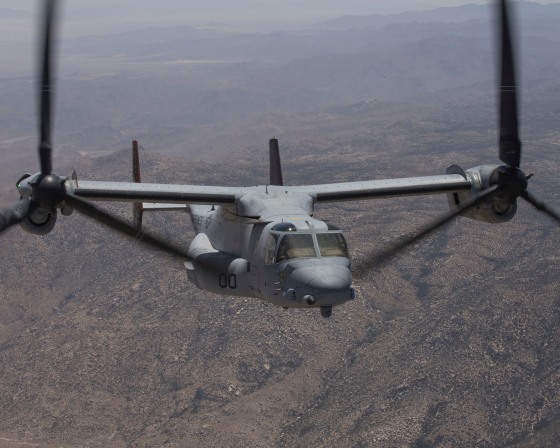SAN DIEGO — The U.S. Navy on Saturday announced a "safety pause" for non-deployed aircraft after a pair of crashes in Southern California during the week.
The Monday pause will give Naval Air Forces, including U.S. Marine Corps aircraft operations, an opportunity to review risk management and implement fresh safety training, U.S. Navy officials said in a statement.
The week's lost aircraft include Wednesday's deadly crash of a U.S. Marine Corps Osprey near Glamis, an area in Imperial County about 150 miles east of San Diego.
Late Friday, U.S. Marine Corps officials identified the deceased: Capt. John J. Sax, 33, of Placer, California; Capt. Nicholas P. Losapio, 31, of Rockingham, New Hampshire; Cpl. Nathan E. Carlson, 21, of Winnebago, Illinois; Cpl. Seth D. Rasmuson, 21, of Johnson, Wyoming; and Lance Cpl. Evan A. Strickland, 19, of Valencia, New Mexico.
On Saturday, baseball's Los Angeles Dodgers said Sax was the son of team legend Steve Sax, who played second base and later worked on the coaching staff of the Arizona Diamondbacks.
Sax said in a subsequent statement that the son he called Johnny perished during a training exercise.
"He was my hero and the best man I know," Steve Sax said. "There was no better person to defend our country."
The cause of that crash was under investigation.
The second aircraft was reported down Thursday about 60 miles northeast of El Centro, also in Imperial County.
A U.S. Navy MH-60S Seahawk helicopter conducting a “routine training flight" went down on a training range, authorities said. All four on board survived, and only one had to be hospitalized for an injury, which was described as non-life-threatening.
The crashes came as Commander in Chief and President Joe Biden was in Southern California for the Summit of the Americas. When the president uses the Marine One-designated helicopter for transportation, it's usually accompanied by a version of the Osprey.
The Osprey can take off and land like a helicopter, but fly like an airplane thanks to its “tiltrotor” engines. The vehicle was involved in crashes that killed more than 30 people before it went into service in 2007.
In their statement Saturday, U.S. Navy officials explained their motivation for the safety pause: "In order to maintain the readiness of our force, we must ensure the safety of our people remains one of our top priorities."
Although deployed aircraft were exempted from the pause, the U.S. Navy said those aircraft would have to undergo the same reviews "at the earliest possible opportunity."

